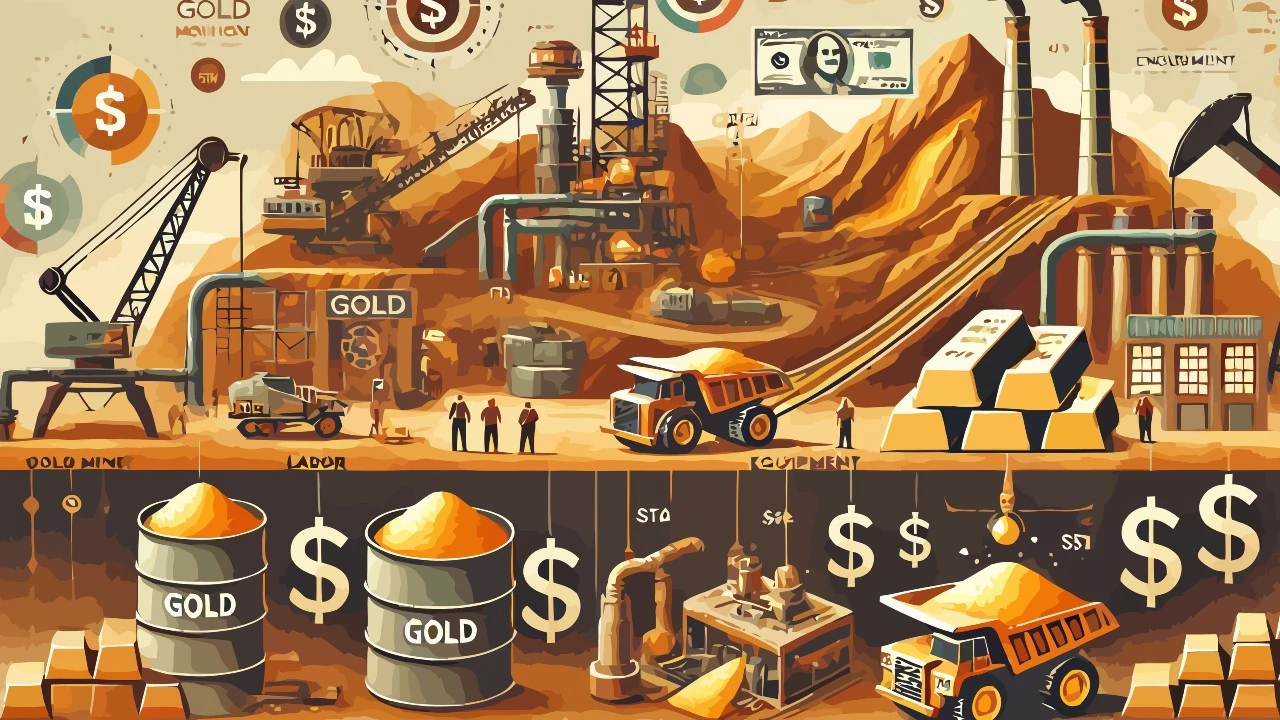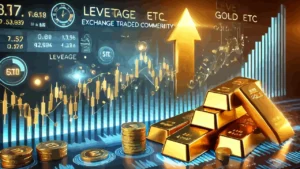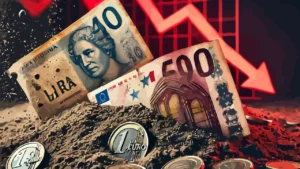Gold mining is a complex and expensive process involving multiple stages, each with significant costs in terms of resources, technology and environmental impact.
This article will explore in detail the costs associated with the entire gold mining cycle, from initial exploration to final refining.
Contents
#1. Mineral exploration
The exploration phase is the starting point for every mining project. The main objectives are to identify gold deposits and determine their profitability. This process can last years and requires a significant commitment of financial and technological resources.
- Technologies used: geophysics, remote sensing, exploratory drilling and chemical analysis. Cutting-edge technologies, such as drones for geological surveying and simulation software, can reduce risks and increase efficiency,
- Main costs: salaries of geologists and experts (approximately 100,000-200,000 EUR per year per professional), advanced instruments (50,000-500,000 EUR per equipment), laboratory tests and logistics costs,
- Duration: It can take 3 to 10 years to find a promising deposit. During this period, a mining company can easily invest between 10 and 30 million EUR just for preliminary exploration.
Furthermore, the risk is high: only a fraction of exploration projects lead to the discovery of an economically exploitable deposit. This makes exploration a critical and highly expensive phase.
#2. Mine development
After the identification of a promising deposit, the mine development phase begins, which represents one of the most significant expenditure items in the life cycle of a mining project. This phase includes several key activities.
- Mine design: Engineers plan the layout of the mine, the extraction method and the necessary infrastructure. This phase can cost between 5 and 15 million EUR, depending on the complexity of the project,
- Infrastructure construction: The creation of roads, treatment plants, warehouses and other operational facilities can require investments of between EUR 100 and 500 million. Mines in remote areas require additional expenditure for the construction of housing for workers,
- Permits and authorizations: Obtaining environmental licenses and mining permits can cost up to EUR 10 million, including environmental impact studies and negotiations with local authorities.
The development phase lasts from 2 to 5 years, during which the company has to sustain high operating costs without yet generating any income.
#3. Ore extraction
Extraction is the most visible and crucial operational phase. This phase involves the physical recovery of the raw mineral and requires a wide range of technical and human resources.
- Open-pit mining: This method is suitable for deposits close to the surface. Although the costs per tonne of ore are lower (between 2 and 5 EUR), the environmental impact is greater. The construction of an open-pit mine can require up to 1 billion EUR,
- Underground mines: These mines are more complex and expensive, with extraction costs that can reach 50-100 EUR per tonne. However, they are more suitable for deep deposits,
- Equipment: Excavators, drills and trucks cost millions of dollars each. A complete fleet of machines for a medium-sized mine can exceed 50 million EUR,
- Energy costs: These are one of the most expensive items, with expenses that can reach €20 million per year to power machinery and facilities.
Safety is another crucial element, with significant costs for protective equipment and staff training.
#4. Transportation and processing
After mining, the raw ore must be transported and processed to separate the gold from other materials, a process that requires advanced infrastructure and significant financial investment.
- Transport: Ore is often transported over long distances to processing plants. This entails significant logistics costs, which can reach EUR 5-10 million per year, especially in remote areas,
- Processing: This includes crushing, grinding and chemical treatment of the ore. The use of chemicals such as cyanide is common, with annual costs that can exceed EUR 20 million,
- Waste Management: Processing generates large amounts of toxic waste, which can cost millions of euros per year to manage, depending on local environmental regulations.
This stage is crucial to determine the overall efficiency of the project, with a direct impact on the final profits.
#5. Refining
The final stage is refining the gold to obtain a pure metal, ready for use or sale. This process requires advanced technology and high precision.
- Refining techniques: The most common method is electrolysis, which allows to obtain a high purity. Each refining plant can cost between 10 and 50 million EUR to install,
- Operating expenses: include electricity (EUR 1-5 million per year), skilled labor and chemical consumables,
- Final product: Refined gold reaches a purity of 99.99% and can be sold at prices that reflect the global market, currently around EUR 85 per gram.
Refining is a relatively short phase compared to the others, but it is essential to maximize the value of the extracted mineral.
#6. Environmental and social costs
Gold mining also involves indirect costs, which are often underestimated but crucial to the long-term success of a project.
- Environmental impact: This includes deforestation, water pollution and toxic waste generation. Companies can spend between 10 and 50 million euros to mitigate these impacts,
- Social compensation: Many companies invest in social responsibility programs to support local communities. These investments can exceed €20 million over the life of a mine,
- Regulatory Compliance: Complying with environmental and social regulations is costly, but essential to maintaining legal and sustainable operations.
Environmental and social impacts are increasingly under the spotlight, with governments and the public demanding greater transparency and accountability.











Leave a Reply